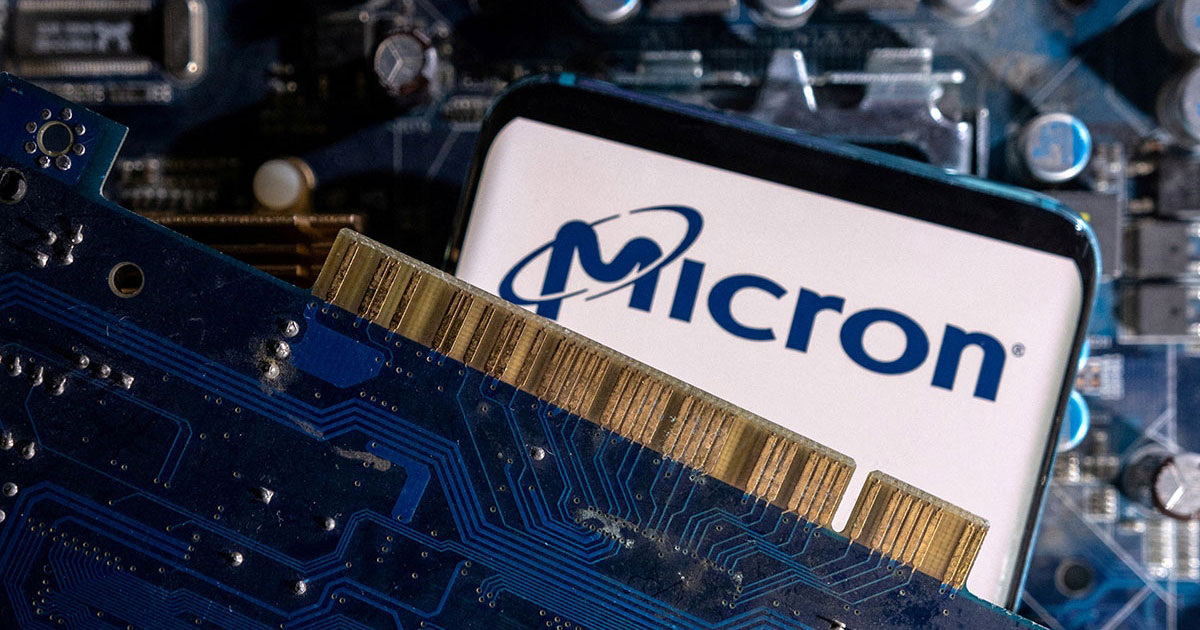U.S. memory giant Micron Technology has notified American clients that it will begin imposing additional surcharges starting today, April 9th, in response to new reciprocal tariff policies announced by former President Donald Trump.
While semiconductors themselves have been exempted from the April 2nd tariff announcement, DRAM modules and solid-state drives (SSDs)—key components in automotive electronics, laptops, and data center servers—remain subject to the new trade duties.
Micron stated in a customer letter that although some products are excluded from the new tariffs, many others are not, and the company has no choice but to pass these additional costs on to customers.
Most of Micron’s manufacturing operations are located in Asia, including mainland China, Taiwan, Japan, Malaysia, and Singapore, making the company particularly exposed to cross-border trade friction.
During its earnings call on March 21, Micron executives had already hinted at plans to shift tariff-related costs to clients, and just days later, at the end of March, the company issued another notice citing unexpectedly strong demand as the reason behind a general price increase.
Micron is not alone. Executives at other NAND-based memory module makers across Asia have signaled their intention to follow Micron’s lead and let U.S. clients absorb the financial impact of the tariffs themselves.

Industry Implications
1. U.S.-based OEMs and ODMs to Face Immediate Cost Pressure
Enterprises that rely on Micron’s DRAM or SSD solutions—particularly in high-end server and laptop segments—are expected to feel the pinch. Some may seek alternatives from other major memory players such as Samsung or SK Hynix, or even consider Chinese domestic brands if they fall outside tariff regulations.
2. Asian Module Makers Could Benefit
Brands like ADATA, Kingston, or Innodisk may gain short-term leverage to raise prices amid tightening supply. However, it remains to be seen whether U.S. clients will accept such cost transfers or instead look to restructure their supply chains.
3. Short-term Market Fluctuations Expected
With demand already surging and tariff-driven costs rising, global prices for DRAM and SSD modules are likely to climb further in the short term. Some downstream manufacturers may expedite procurement activities, potentially worsening the near-term supply-demand imbalance.
4. Mid- to Long-Term Supply Chain Strategies May Shift
U.S. companies may re-evaluate the risks of relying on Asia-centric manufacturing and seek to diversify production bases to tariff-neutral regions such as Vietnam, India, or Mexico. Meanwhile, Asian vendors may ramp up investment in such regions to maintain access to global markets.
Suggestions for Industry Players
If you're a solution provider, distributor, or OEM manufacturer, here are some strategic steps to consider:
Clarify price revision mechanisms with upstream suppliers like Micron to avoid surprise margin squeezes.
Leverage existing inventory to capture short-term opportunities through dynamic pricing or bundling.
Consider introducing alternative brands or second-tier suppliers with less tariff exposure to maintain competitiveness.
Proactively assist clients with BOM (Bill of Materials) diversification and cost risk planning to strengthen long-term relationships.
Conclusion
Micron’s decision underscores the broader challenges that geopolitical factors continue to pose to the global electronics supply chain. As tariffs and trade tensions reshape cost structures and logistics strategies, stakeholders across the ecosystem must stay agile and forward-thinking to remain competitive.


 MCU Solutions
MCU Solutions PCBA Solutions
PCBA Solutions Bluetooth Solutions
Bluetooth Solutions
 FAQ
FAQ Contact Us
Contact Us
 Company News
Company News Technology News
Technology News Industry News
Industry News PCBA News
PCBA News
 Company Profile
Company Profile Certificates
Certificates Terms & Conditions
Terms & Conditions Privacy Statement
Privacy Statement
 Home Appliances
Home Appliances Beauty Appliances
Beauty Appliances Lighting
Lighting Kid's Toys
Kid's Toys Security Alarm
Security Alarm Health Care
Health Care



 More information?
More information?






